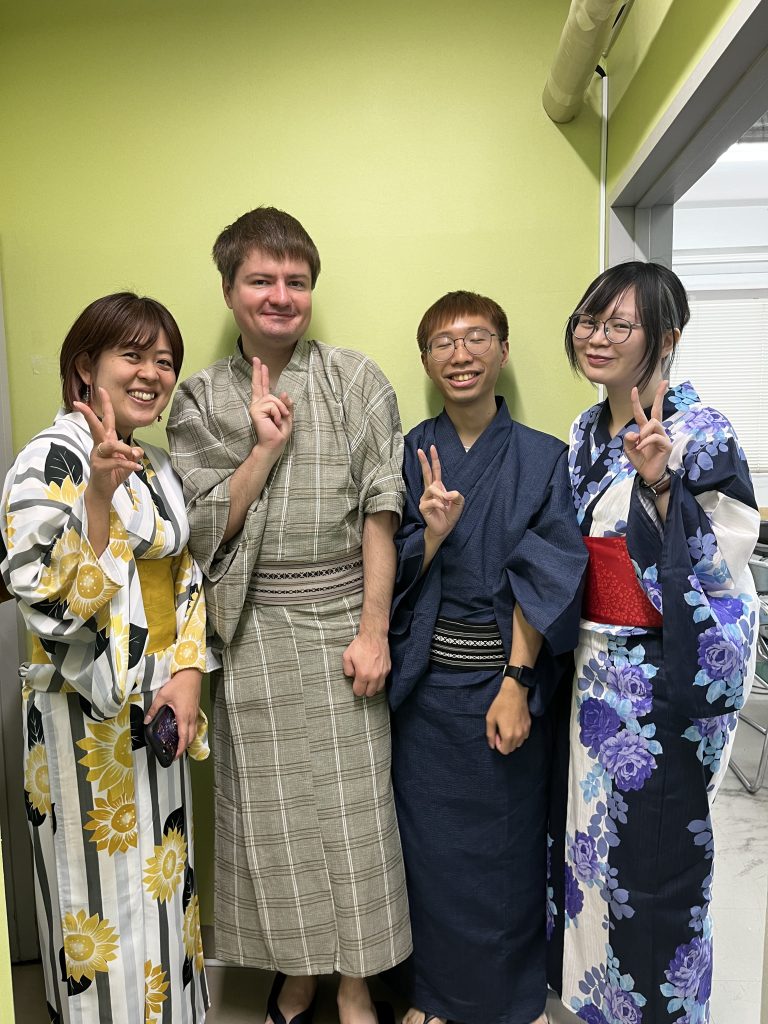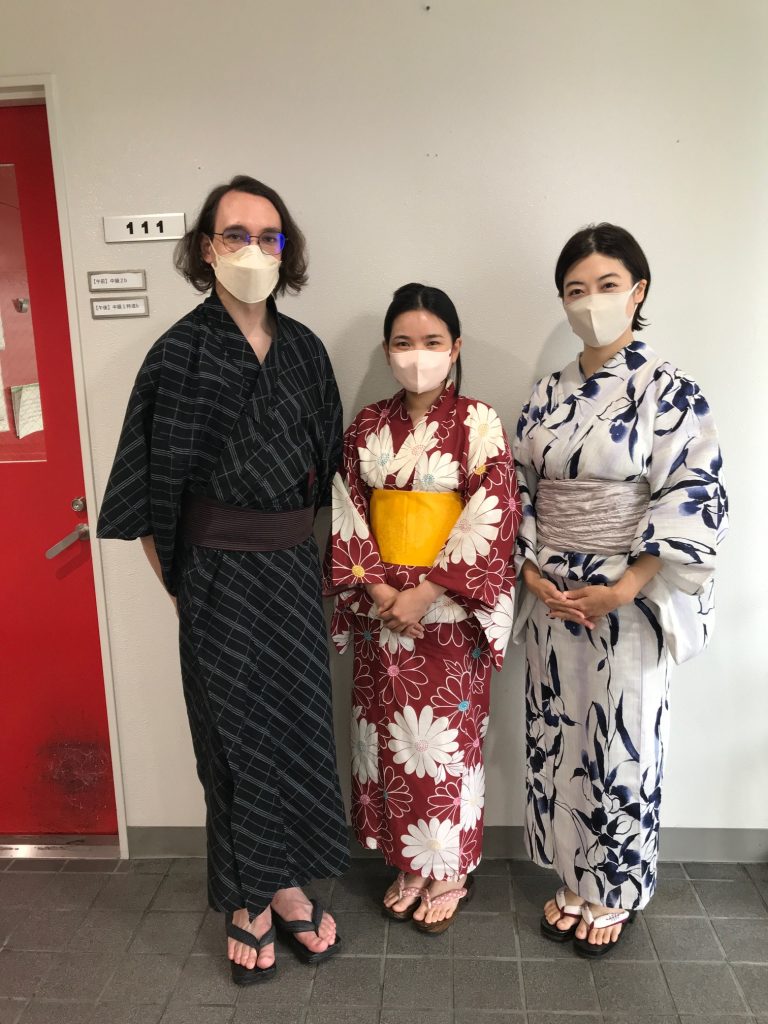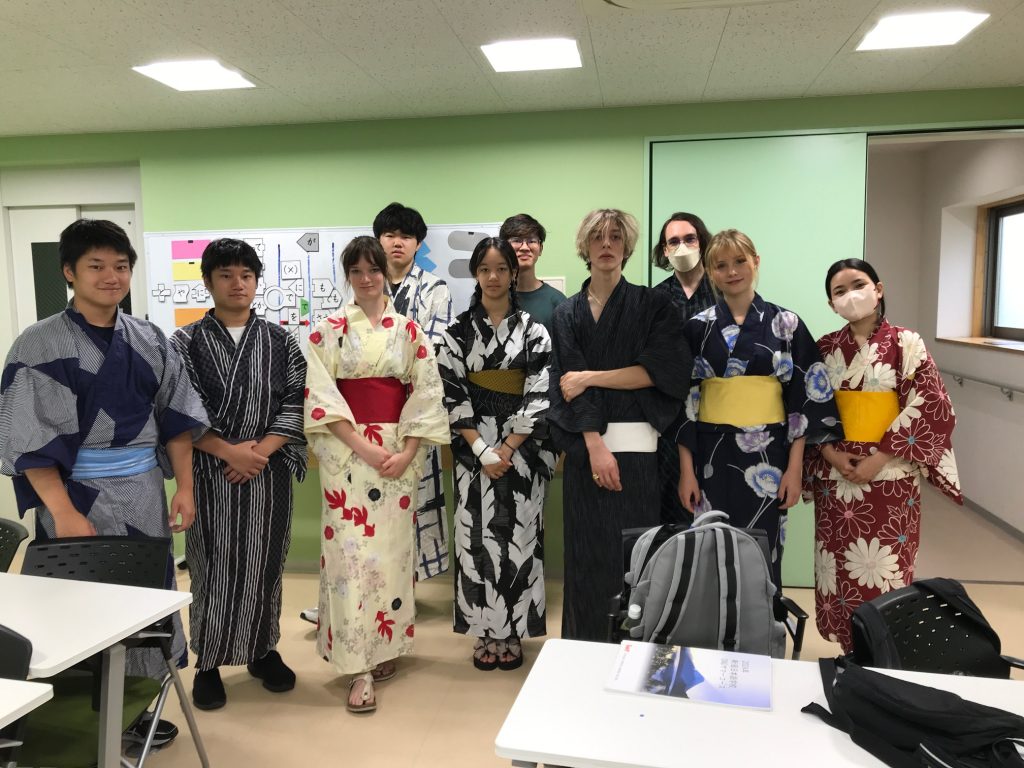
The yukata is a lightweight garment often worn during summer festivals in Japan. Unlike the kimono, which is more formal and often more challenging to wear, the yukata is a more casual yet equally elegant outfit made of cotton and decorated with floral, geometric, or nature-inspired patterns.

Historical background of yukata
The yukata is a part of Japan’s rich traditional clothing culture. It originated in the Heian period as a linen or hemp garment called yukatabira, worn by court nobles to protect their skin from steam burns in bathhouses. At that time, bathing was done in steam rooms, not the modern baths we know today.
Over time, yukatabira evolved. During the Azuchi-Momoyama period, people began wearing them after bathing, appreciating their breathability and ability to absorb moisture. Eventually, they became common as sleepwear. In the Edo period, the fabric shifted from linen to cotton, and with the rise of town culture, the yukata developed into a more casual and stylish garment — even suitable for going out.
One factor that contributed to the spread of cotton yukata was the Tenpō Reforms, which banned townspeople from wearing silk. As a result, cotton yukata became more popular and diversified.
Traditionally, white yukata dyed with indigo were common. Light-colored yukata were typically worn during the day, while darker blue ones were ideal for evening wear — not just for style, but also because the indigo dye naturally repels insects.
By the late 19th and early 20th centuries, the yukata had firmly established its role as a summer garment worn during festivals, fireworks displays, and casual outings. Unlike the more formal kimono, the yukata remained light, unlined, and easy to wear — a perfect match for Japan’s humid summer climate.
At SNG, we introduce yukata as part of our cultural exchange efforts. To help students experience this tradition firsthand, we hold a two-day yukata sale, offering them at affordable prices to those interested.
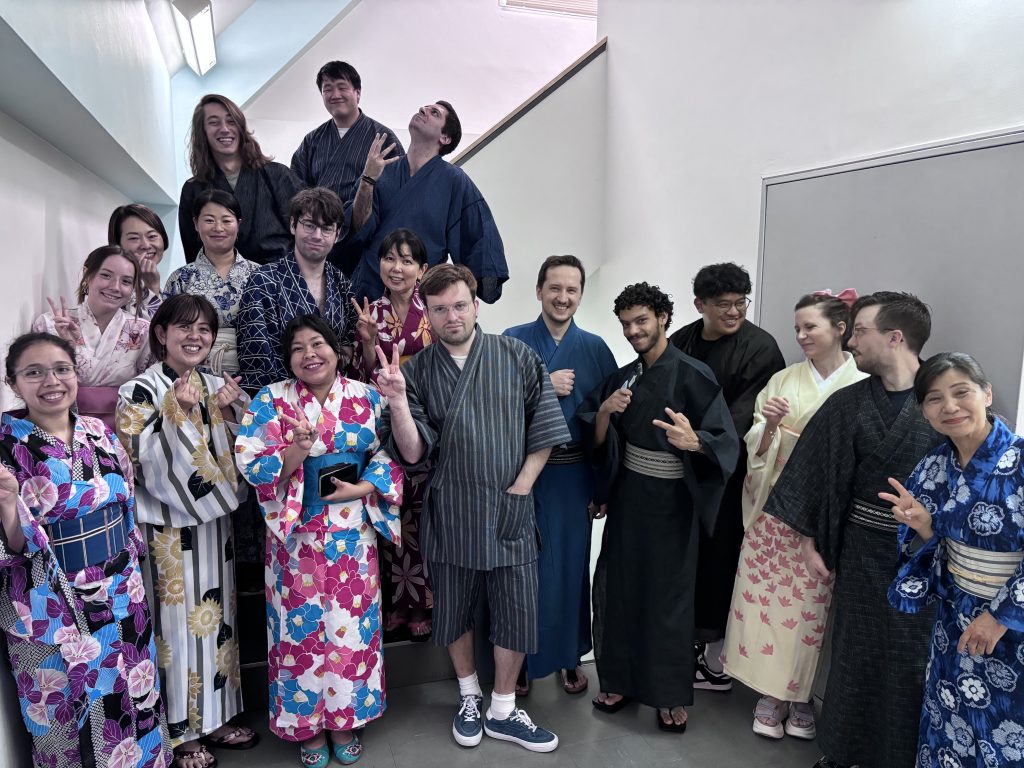
Cultural significance
Unlike the formal kimono, the yukata is unlined, light, and informal, often worn without many layers or accessories. This makes it accessible and comfortable, while still reflecting the beauty and discipline of traditional Japanese dress — with its straight seams, folded collar, and sash (obi).
Wearing a yukata demonstrates attention to season, formality, and aesthetic harmony, which are all important values in Japanese culture. Yukata are strongly associated with summer festivals (matsuri), fireworks displays (hanabi), and Bon Odori dances. Wearing a yukata during these events allows people to celebrate tradition and feel more connected to Japanese customs, even in everyday settings.
While yukata are more casual than kimono, they still reflect some traditional style rules, especially in more formal settings. In particular, colors and patterns can vary depending on age, gender, and even marital status — although these rules are more flexible today than in the past.
Traditionally, young and unmarried women tend to wear yukata with bright colors such as pink, red, or light blue, often decorated with bold floral or playful patterns like butterflies or fireworks. In contrast, married or older women usually opt for more subdued and elegant tones such as navy, plum, or beige, featuring simpler, more refined motifs. Men’s yukata are typically darker in color — black, indigo, or grey — and have plain or striped designs.
Yukata also reflects seasonal elements, much like kimono. For example, cherry blossoms and butterflies are common in spring; fireworks, waves, and morning glories (asagao) are popular in summer; and in autumn, designs often feature maple leaves or tall grasses.
Although these patterns and meanings still exist, they’re not strictly followed today — especially at summer festivals, where people of all ages and backgrounds enjoy choosing yukata based on personal taste. Wearing a yukata has become a fun and accessible way to experience traditional Japanese culture.
How to wear a yukata?
1. Put on the Yukata
- Slip your arms through the sleeves like a robe.
- Make sure the back seam is centered along your spine.
2. Wrap the Left Side Over the Right
- Always wrap the left side over the right side.
(Important: right over left is only used for dressing the deceased in Japan.)
3. Adjust the Length
- Pull the yukata up so the hem is just above your ankles.
- Fold any extra fabric at your waist neatly to adjust the length.
4. Tie the Koshi-himo (Waist Cord)
- Use a thin belt or cord called a koshi-himo to secure the yukata around your waist.
- Tie it tightly to keep the yukata in place.
5. Make the Obi (Wide Belt)
- Wrap the obi (a wide belt) around your waist, usually twice.
- Tie it at the back in a decorative knot or bow.
- There are many ways to tie the obi; a simple bow is common for beginners.
6. Final Adjustments
- Make sure the collar forms a nice “V” shape at the front.
- The back of the collar should be a little away from your neck for comfort.
- Adjust the sleeves and hem to make sure everything looks neat.
Optional
- Wear simple sandals (geta) and tabi socks if possible to complete the look.
- If you want, you can add a small fan or a purse as accessories.
Learn vocabulary around Yukata !
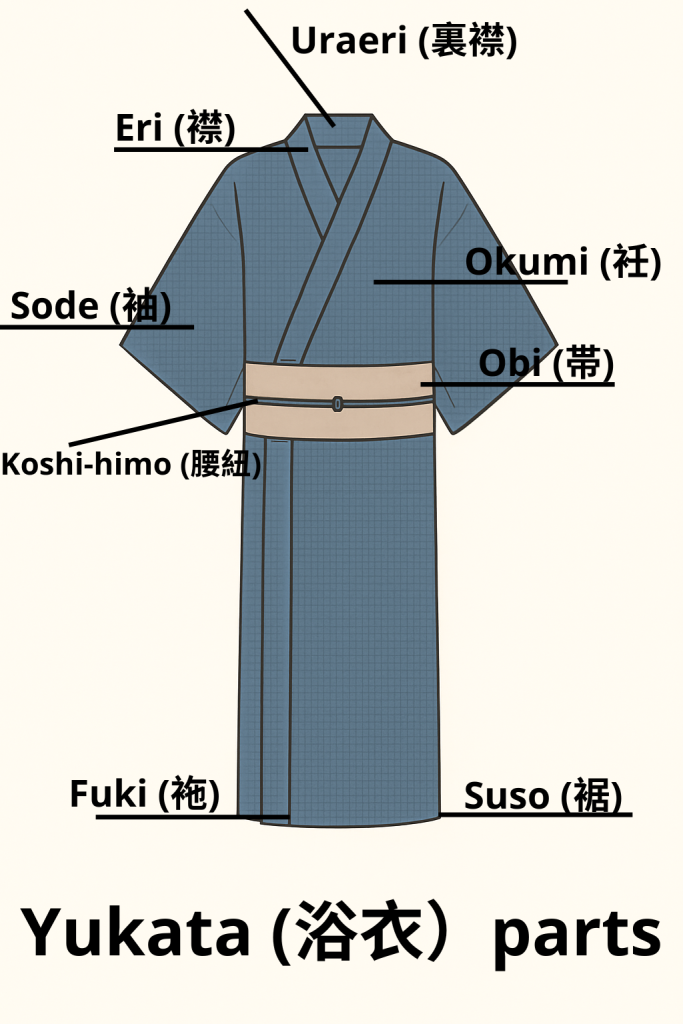
Eri (襟) — Collar
The collar of the yukata, which is folded neatly around the neck. The way it’s folded is important for proper wear.
Sode (袖) — Sleeves
The wide, flowing sleeves typical of yukata and kimono. Yukata sleeves are usually shorter and simpler than formal kimono sleeves.
Okumi (衽) — Front Panel
The overlapping front panels of the yukata. The left panel always goes over the right.
Fuki (袘 or 袘皮) — Hem Guard
The strip of fabric at the bottom edge of the yukata to protect the hem from dirt and wear.
Suso (裾) — Hem
The bottom edge of the yukata.
Uraeri (裏襟) — Inner Collar
The inner side of the collar, often visible near the neck.
Obi (帯) — Belt
The wide sash wrapped around the waist, tied in a decorative knot at the back.
Koshi-himo (腰紐) — Waist Cord
A thin cord used to hold the yukata in place under the obi.
Date-jime (伊達締め) — Obi Underbelt
A soft belt worn under the obi to keep everything smooth and secure (optional with yukata).
Yukata day at SNG !
Every year during the summer our school held a Yukata day. During it, everyone in school, including staff and students spend the day wearing a yukata. Join us!
